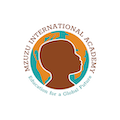Education Insights:March 2024.
Many apologies for my Blog being late this month. However,  it is still March, so it counts. It has been a very busy term, being only 11 weeks long, and a great deal has been achieved in a short time. I thought it might be fun to outline how lessons are developed in the primary school, to show the care that your child’s teacher takes, in order to ensure that they receive the best possible education. I’ve called this “The anatomy of a Lesson”.
it is still March, so it counts. It has been a very busy term, being only 11 weeks long, and a great deal has been achieved in a short time. I thought it might be fun to outline how lessons are developed in the primary school, to show the care that your child’s teacher takes, in order to ensure that they receive the best possible education. I’ve called this “The anatomy of a Lesson”.
The first reference a teacher makes is to the Scheme of Work that is set out by the National Curriculum for the UK. This outlines the content to be covered by each year group, in each subject area in each term. All of our textbooks cover this and they are available to the teacher. Once the teacher knows what they have to cover they will begin to plan.
As an example, we will look at a comprehension lesson in any Key Stage Two Class. After deciding on the text to be used, the teacher will then draw up a formal lesson plan. This will include the Lesson Objectives (LO) which describe what the children will be learning (We are learning to or WALT) and the success criteria (SCs) which describe what success looks like (What I am looking for or WILF). A warmup activity comes next, which may link to previous learning or may help the pupils settle and get ready for learning. The teacher will look closely at the text chosen and identify any new vocabulary that will need to be explained and covered before the pupils can gain understanding from the text they are about to read.
How the text is then read follows on the plan, using a variety of methods. It could be taking turns, involve group discussion, paired working or individual effort. The teacher decides at this point what is most appropriate and will have planned specific questions on the text which will develop the pupils’ understanding. At this stage the teacher will have thought about the various abilities within their class and will differentiate some of the questions, in order to challenge the more advanced pupils, and help those with less ability to succeed and develop at their level. The teacher then needs to look at how the work will be assessed. There are two main types of assessment, Summative Assessment and Formative Assessment. Summative assessment involves the teacher marking a completed piece of work, or testing understanding in written form (Grading or Examination), Formative assessment is used mostly by teachers during lessons. It involves asking targeted questions, correcting misconceptions, and giving feedback whilst teaching. Formative assessment allows the teacher to judge the understanding of pupils, in real time. Lastly, after the main exercise is completed, the teacher will plan a plenary to the lesson, which sums up the content and allows the pupils to revisit the Learning they have completed. All of the above is planned beforehand.
The lesson is then taught. The teacher may have to adjust the pace of the lesson or divert some time to cover misconceptions. All the while assessing the understanding of the pupils, using open and closed questions in order to complete the learning Objective (LO) of the lesson. If the lesson required the pupils to write their answers, they will then have to mark the pupils’ work (Summative Assessment), giving feedback on how they c an improve and deciding the next steps.
an improve and deciding the next steps.
So, as you can see, it is not just a matter of “Let’s look at the next page in the textbook”. This type of forward planning is carried on for almost all classroom activities. It is obviously less complex in the lower years but there it is even more important as the children develop much more quickly.
Until Next month, enjoy the Easter break and keep your children reading every day.





